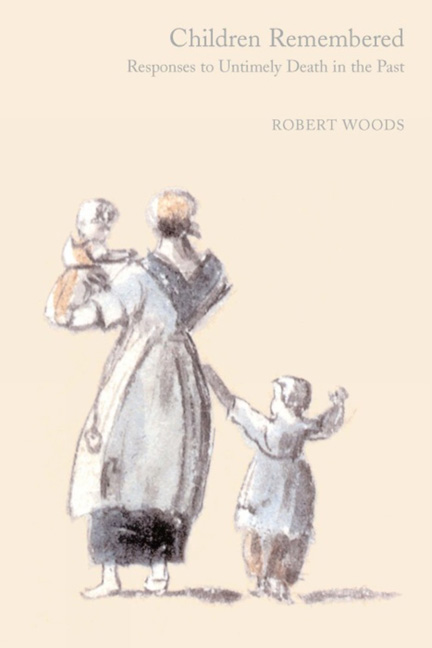Book contents
- Frontmatter
- Dedication
- Contents
- List of Tables
- List of Figures
- List of Illustrations
- 1 Introduction: ‘the lines of life’
- 2 Après la mort des enfants
- 3 Mortality, Childcare and Mourning
- 4 Children in Pictures and Monuments
- 5 Emotions and Literature
- 6 Poems, Mainly of Child Loss
- 7 The Vocabulary of Grief
- 8 Parallel Histories: Experience and Expression
- Acknowledgements
- Notes on the Sixty-Nine Poems
- Notes
- Select Bibliography
- Index
3 - Mortality, Childcare and Mourning
- Frontmatter
- Dedication
- Contents
- List of Tables
- List of Figures
- List of Illustrations
- 1 Introduction: ‘the lines of life’
- 2 Après la mort des enfants
- 3 Mortality, Childcare and Mourning
- 4 Children in Pictures and Monuments
- 5 Emotions and Literature
- 6 Poems, Mainly of Child Loss
- 7 The Vocabulary of Grief
- 8 Parallel Histories: Experience and Expression
- Acknowledgements
- Notes on the Sixty-Nine Poems
- Notes
- Select Bibliography
- Index
Summary
There is still a great deal of uncertainty about infant mortality rates at delivery or in the first few days postpartum. There is no question that mortality rates in the first year varied from 15 to 30 per cent, but much of that was certainly due to environmental circumstances – malnutrition, dysenteric and gastric diseases – rather than to obstetric malpractice. At any rate, the assumption that the stillborn rate in preindustrial Europe was higher than for industrial Europe should certainly not be taken for granted.
These three sentences tell us everything, and nothing. They are largely correct, yet they express our deep ignorance. Perhaps the best way to begin this discussion of the risk of premature death in the past, to place it on as secure a footing as possible, is to demonstrate the importance of the problem. The proportion of all deaths that would have occurred to infants and children under 10 years of age is likely to have varied with the general level of mortality. In a society with very high mortality (life expectancy at birth less than 30 years), one should expect upwards of 40 per cent of all deaths to be those of children. With moderately high mortality (life expectancy about 50 years), then perhaps 20 per cent would be children and in relatively low mortality populations (life expectancy above 60 years), less than 10 per cent of deaths would be to those under 10 years of age. Figure 3.1 shows these properties of typical mortality structures. It also illustrates the fact that the rate of population growth, as well as the level of mortality, will affect these proportions. For example, when life expectancy at birth is 40 years and there is no population growth then 30 per cent of all deaths will be to children, but if there were to be 1 per cent growth each year then the proportion would rise to something in excess of 40 per cent. A further property of this way of looking at mortality patterns is that the 0 per cent curve in figure 3.1 also expresses the level of childhood mortality.
- Type
- Chapter
- Information
- Children RememberedResponses to Untimely Death in the Past, pp. 33 - 60Publisher: Liverpool University PressPrint publication year: 2006



